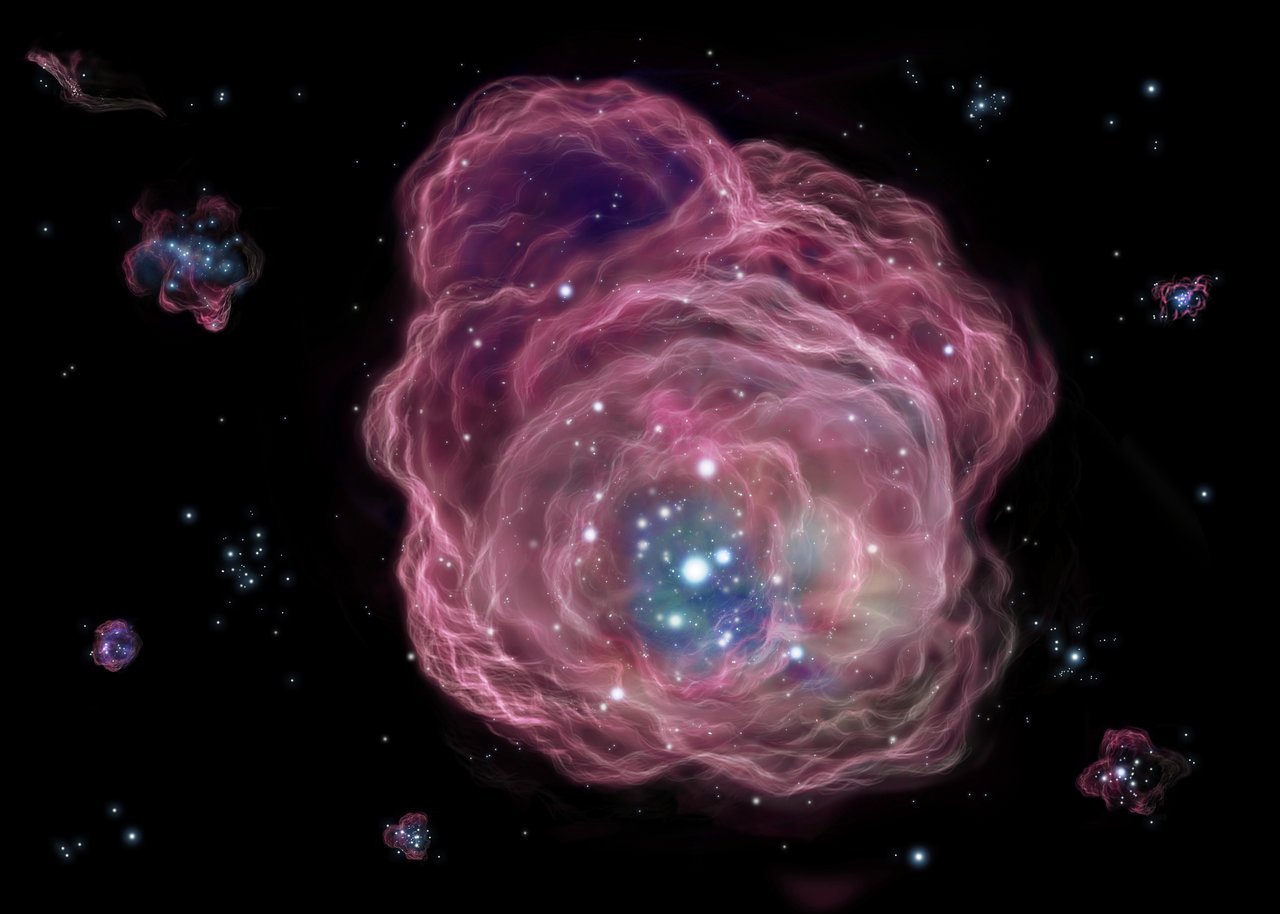(NLDO) - GLIMPSE-16403 may contain the first luminous objects when the universe just emerged from the "Dark Ages" 13 billion years ago.
Using data from the James Webb Space Telescope developed and operated by NASA, a research team led by Dr. Seiji Fujimoto from the University of Texas at Austin (USA) has identified where the universe's first stars may have been hidden.
According to Science Alert , American scientists have captured a magical object named GLIMPSE-16403, an "ancestor" of the Milky Way.

An illustration depicting a Population III stellar explosion in the early universe - Photo: NAOJ
The image they got is of GLIMPSE-16403 from 13 billion years ago, when the universe was just 825 million years old.
According to Science Alert , this galaxy meets all the criteria that scientists set for Population III galaxies, the "hosts" of Population III stars, the first generation of stars in the universe.
According to widely accepted theory, Population III stars were the first stars to form in the universe, helping to end a period known as the Dark Ages.
At that time our universe had an extremely simple chemical composition, consisting mainly of hydrogen and helium, along with very small amounts of other light elements.
Population III stars, formed from this chemically poor material, are extremely massive but short-lived. Yet within their nuclei are efficient reactors that forge heavier elements.
When Population III stars explode, heavy elements are released, making the universe a little more chemically rich.
Today, 13 billion years later, our periodic table is as long as it is because generations of stars have forged new elements.
Because it is so ancient, finding a Population III star seems like an impossible mission. However, James Webb's extraordinary vision has provided a rare opportunity.
Light from an object billions of light years away also takes billions of years to reach Earth, so looking billions of light years away is also looking into the past of the universe.
Writing in the scientific journal The Astrophysical Journal, the authors said that observational data on the galaxy GLIMPSE-16403 is still very faint, so they will need to do more work to carefully examine the nature of the stars inside it.
Regardless, identifying the Population III stellar candidates has been a huge step forward for cosmology.
Source: https://nld.com.vn/my-phat-hien-dai-ngan-ha-dau-tien-cua-vu-tru-196250309084222487.htm



































































































Comment (0)